The following pictures show examples of shipment boxes for transporting blood samples below 0°C.
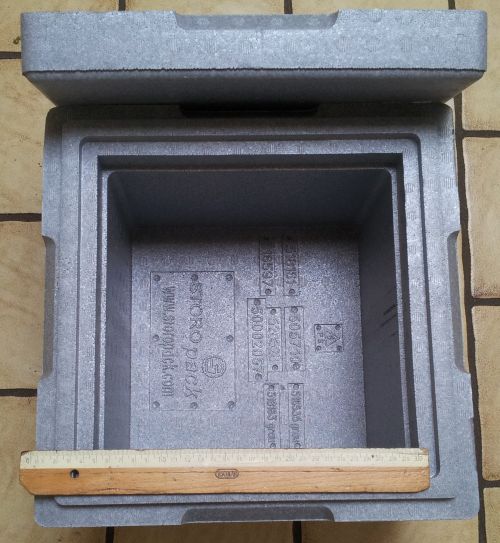
This one is a Neopor box with more than 5 cm thick walls, better insulation properties than styrofoam and tightly closing lid. A small amount of dry ice (< 3 kg) is allowed without declaration and since every passenger of an airplane transports around 5 L of blood, the shipment of tiny amounts of blood in stable tubes in a good styrofoam box is no risk at all. If the empty space is fully filled with dry ice it's useful to make a small hole with a needle to prevent any build up of pressure inside the box.
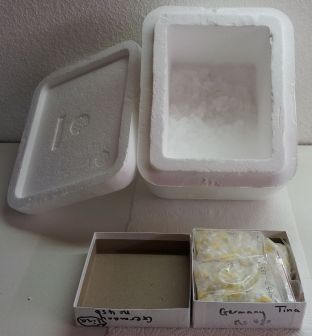
This box is a less good small styrofoam box after a two day transcontinental transport. It fits easily into a normal suitcase and is therefore also suitable for a personal transport. From the orignal 3 kg dry ice there was still enough leftover for a third day.
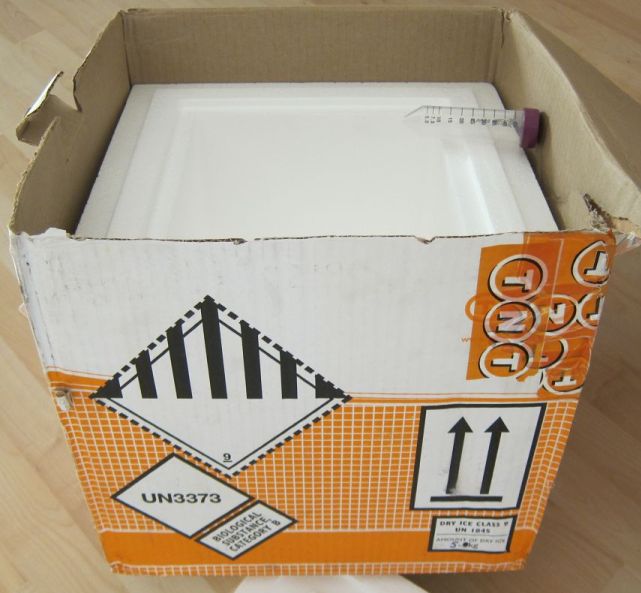
This box shows one which was provided by TNT for a shipment from Nairobi to Germany and included the dry ice and all necessary labelling (UN3373 for biological samples, UN1845 for dry ice). The walls are even thicker than 5 cm and from the 5 kg dry ice which were added in Nairobi there was still plenty of dry ice in the box after a 4 day transport. The cost of this shipment (box, dry ice and door to door transport) was around 500 USD.
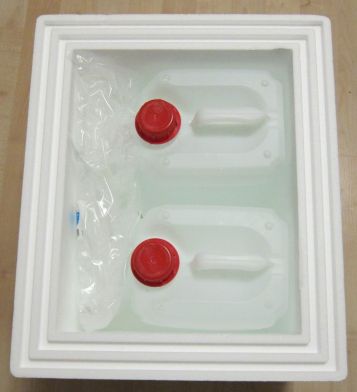
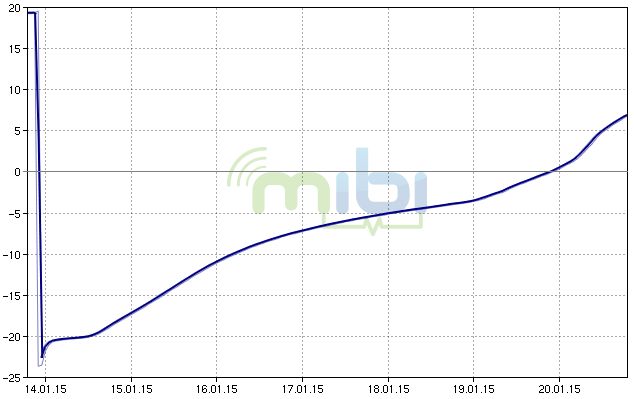
This picture and diagram shows on how it is possible to transport samples (here 2000 tubes in Ziploc bags) frozen without dry ice. It needs a good styrofoam box in which two 5L container with salt water fits. The salt in the water (500g per 5L) keeps the temperature in the box longer below -5° (without the salt the temperature would already be after one day at 0°). In this forrm the samples can be kept frozen for almost 6 days which is more than enough for a shipment with a standard courier. Since the 5 proteins are quite robust it's even no problem when the samples would thaw for a not too long time.
Because of these transport options there is usually no need to use an expensive special courier which can cost up to 7000USD to ship samples on dry ice from Africa to Germany. These special shipments take usually also longer than shipments with standard couriers like DHL or Fedex (see examples behind the links). The problem is often that shipments of blood are made unnecessarily dangerous and complicated which increases the effort, the expenses and the time of the shipment.
For importing samples into Germany only this letter has to accompany the box (an updated version of it). As long as there are no animal samples in the box and the EORI number included in the address there is usually no problem with the German custom. When a labelling for the content is necessary the important is to use only the UN3373 declaration which is for non dangerous blood samples (comparable with the blood from passengers of a flight). If this letter is attached to the outside of the box the declaration of the shipment is fully correct.
In case that a personal transport is possible a handover of the samples at one of the airports around Southwest Germany (Frankfurt, Zurich, Paris) might be possible. This is the fastest and least problematic for shipment requirements. A personal transport has at least the same safety since all of the transport work can be done by a reliable person (the Federal Aviation Administration of the USA allows for this 2.5 kg dry ice in the baggage which is sufficient for a 24 hour transport). A cargo transport with a special courier like World Courier involves usually several flights and car transports done by different workers where it is always possible that parcels get lost, damaged or stolen.
If World Courier is used it's important to do the transport in the smallest box which they have (GDI 15):
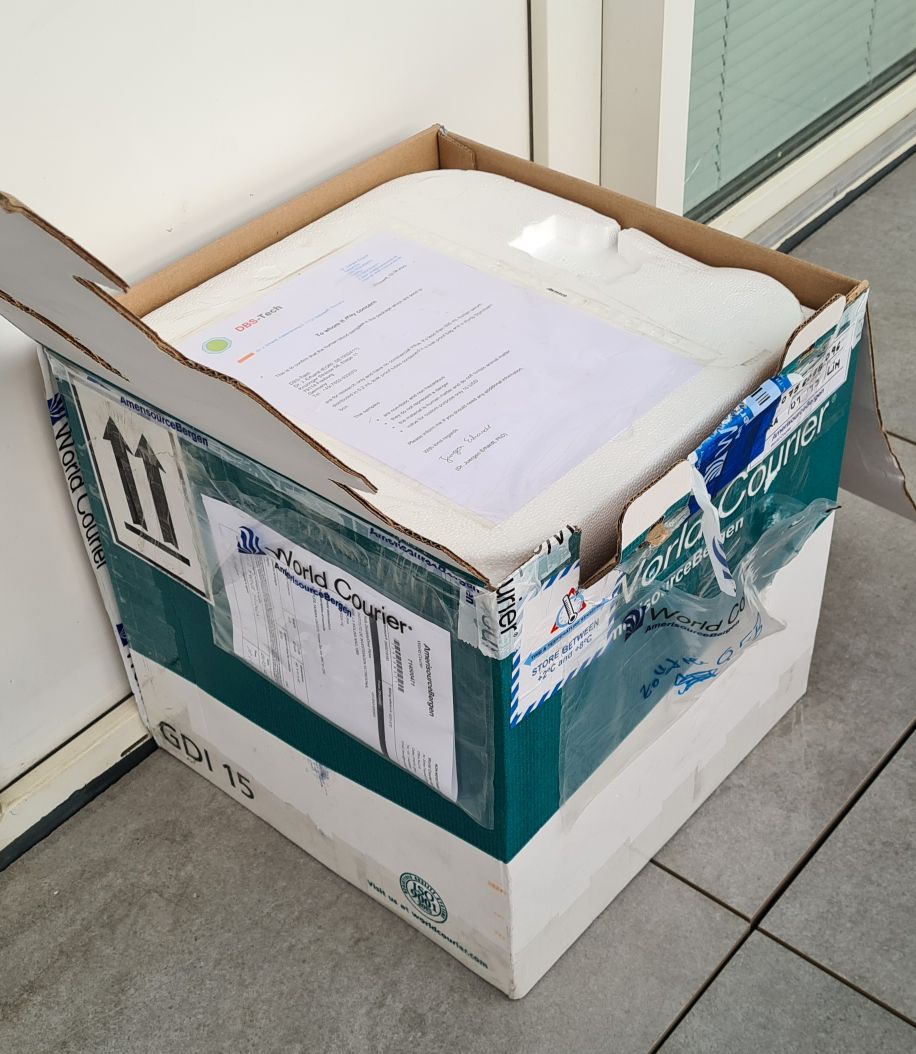
The empty space in this box is 15L which allows to add 12 kg dry ice together with a 1L sample bag for around 700 samples. The dry ice in this box evaporates with a rate of approx. 2 kg/day and keeps therefore samples frozen for 6 days. If several thousand samples have to be transported a switch to the next size (GDI 30) can be necessary. A bigger box is never necessary when the samples are put into a plastic bag (wrapped with a second one for better protection). The GDI 15L box is much less expensive e.g. for a shipment from Africa to Germany this can be 3000 USD for the 15L box and 4400 USD for the 30L box. A standard courier is usually not charging more than 1000 USD for such a shipment.